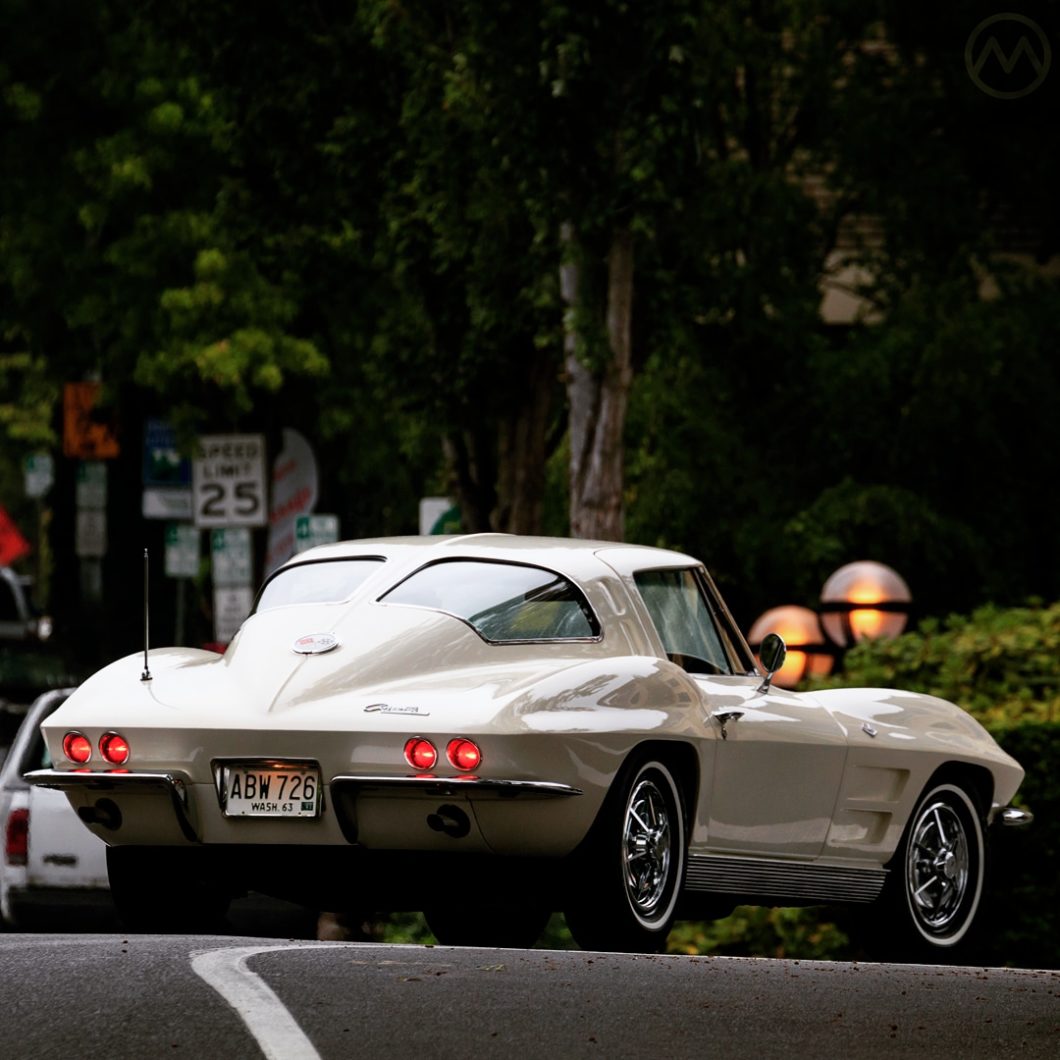The split-window 1963 Corvette “Stingray” is probably the most famous of all of Chevrolet’s sports cars, and it was born from group of people who became famous or already were – Pete Brock, Ed Cole, Zora Arkus-Duntov, Bill Mitchell, Tony Lapine, Larry Shinoda. Famous to hard core car people, anyway.
It actually took a long time for the Stingray to come to fruition – originally it was slated for 1960 and might have been quite a bit different (at least, underneath), but market realities pushed it to the fall of ’62.
The Humble Original
The original “C1” (a term applied retroactively many years later) Corvette was rather hastily put together from off-the-shelf Chevy bits (the “Blue Flame” six, the Powerglide) and famously used a fiberglass body, like many 1950s sports cars.
Buyers weren’t always happy with the quality of those bodies and the Corvette’s humble pie chassis (mostly inherited from the ’49 Chevy) and powertrain meant it only became a proper sports car with intervention of Arkus-Duntov.
The arrival of Ford’s Thunderbird meant GM couldn’t really drop it, but only Arkus-Duntov’s determination made it work. It was he who saved the car from cancellation and largely he who turned from pretty straight-six also ran to V8 contender starting in 1955.
“Project Q”
In 1956-57, Ed Cole and his engineers working on many projects, including “project Q,” an ambitious idea for regular Chevies with rear transaxles, fully independent suspensions, and possibly all-disc brakes. The specs look a little like a Rover P6 under the skin, in hindsight.
These pieces could be used on a potential Corvette replacement in smaller form, and Arkus-Duntov was delighted at the idea of the Q-Corvette. The shared costs would make the Q-Vette a very capable car for much less investment than just designing one low-volume sports car Corvette sales were still tiny in 1956-57, despite selling in much bigger numbers than ’54-’55.
Duntov’s ambitions for the Q-Vette went so far as to include a possible Aluminum-Zinc alloy body, which was light and would silence critics of fiberglass.
Meanwhile, Bill Mitchell held an internal contest to style the new car, and the winning sketch for what the Q-vette would look like was done by the very young GM newbie Pete Brock. Earlier, two other young stylists – Robert Cumberford and Tony Lapine had proposed an aluminum-bodied roadster as C1 replacement, though that car was going to be too costly.
The sharp recession of 1957-58, which resulted auto sales sliding by 30%, killed the Q idea and, consequently, the Q-Vette. The AMA’s racing ban also hurt the Corvette’s prospects just as the C1 was becoming a proper competition car. Economic realities forced the C1 to soldier on into 1962 as a result.
The first Sting Ray
But the momentum did not end there. Bill Mitchell bought one of the development mules, had Brock’s design turned into a racing roadster called XP-96 Sting Ray (built with help from Lapine and Larry Shinoda) in 1959. It made a big public impression, and more or less the lower half used Brock’s style fairly faithfully.
Shinoda turned the XP-96 into a production proposal at Mitchell’s request, modifying and reviving some of Brock’s idea, which GM greenlit in April, 1960. He and Lapine also helped create a convertible version – Brock’s idea had been a coupe.
Duntov took some of his Q-vette ideas, particularly the rear suspension – which he was able to convince management on because so much work had already been done on the Q-project – and wrapped them around a new frame.
The resulting car was an instant classic. The split rear window, which Mitchell loved and Arkus-Duntov hated, came in for criticism fairly early, but nobody disputed that the Corvette was an equal of other serious sports cars.
The Split-window is an trademark feature of the car and revered today, but at the time, some owners removed it as soon as a one-piece backlight arrived at the parts counter – it was not uncommon to remove it in 1964-67.
The C2 Corvette Diaspora
The people who created the car also went on to big things.
By the time the C2 arrived, Pete Brock was working at Shelby American, then later founded Brock Racing Enterprises (BRE), famously campaigning Datsuns.
Lapine returned to Europe (he was from Latvia) in 1965 and later oversaw design on Opels and the Porsche 944 and 928. Shinoda later played a key role in the C3 before moving to Ford, where he created the “Boss” Mustang – later he owned his own design firm and consulted on the original Jeep Grand Cherokee.
Arkus-Duntov, Cole, and Mitchell alll remained at GM until their retirements, Duntov firmly in charge of the Corvette program until his retirement in 1975.

